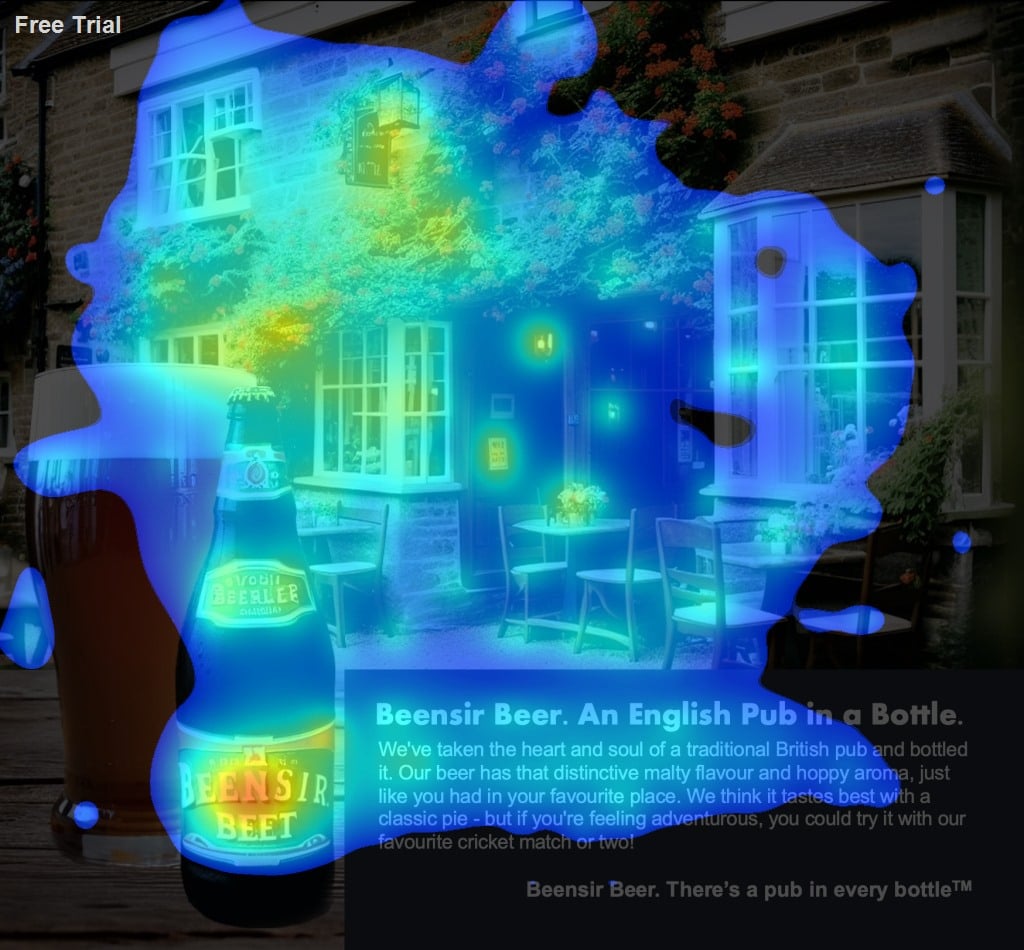Since the pandemic, and the ubiquity of QR codes for contactless menus at restaurants, the humble...
The Artificial Ad, Viewed by Artificial Eyes
In my last post I created a print ad entirely by AI -- the images, the copy, the brand, the tagline. So how better to do some testing of the ad than with 3M's Visual Attention Software or VAS. This piece of AI has been around for several years but seems to fly under the radar given the speed and accuracy with which it can test various aspects of marketing images.
VAS uses machine learning to turn countless numbers of eye-tracking studies into a predictive model. 3M claims that it is 92% accurate in terms of predicting where and for how long human eyes will go when encountering a marketing piece for a few seconds.
The tool is incredibly easy to use -- just drag and drop your stimulus to start the test, which takes just a few seconds. As I usually do, I did numerous screen captures of the various reports that the system spits out, but I needn't have bothered: VAS produces a 9 page PDF report on the visual latency of the tested piece along with key images of each result.
There is also an option to highlight a section or sections of the image for which you want particular feedback. In this case I specified the bottle (the only branded image) which received a 77% -- the likelihood it would be seen within 3-5 seconds, which falls into the top range.
The report then includes a "heat map" of likely attention -- in this case it is fairly scattered with a little more on the bottle than anywhere else. It also looks like the eye almost never gets to the tagline.


Next, the report provides the likely sequencing of what the eye sees, and then uses things like color theory and contrast to show which design elements are contributing the most to the visual latency. Last, the system indicates the "hotspots" (red, yellow and green) on the image -- red is significant, yellow less so, and green is not likely to be seen.



While not the newest kid on the AI block, 3M's VAS is a go-to tool in the marketing kit -- it's cheap, quick and easy, and can give you some fundamental direction on whether your materials are eye-catching and likely to get attention.



